
EMI 8-Track Cartridge
#11. Help! (8X-PCS 3071)
(Update: 13th. April 2024)



 |
|
|
| EMI Original
Cartridge |
|
TITLE
|
HELP! |
|||
| CATALOG NUMBER | 8X-PCS 3071 | |||
|
RELEASE DATE
|
October 1970 / First Issue? | |||
| TRACK LISTING | PROGRAM 1 | PROGRAM 3 |
||
| I Need You [A4] |
Help! [A1] |
|||
| Another Girl [A5] |
You've Got To Hide Your Love Away [A3] |
|||
| I've Just Seen A Face
[B5] |
You're going To Lose
That Girl [A6] |
|||
| Yesterday [B6] |
It's Only Love [B2] |
|||
| PROGRAM
2 |
PROGRAM 4 |
|||
| The Night Before [A2] |
You Like Me Too Much [B3] |
|||
| Ticket To Ride [A7] |
Tell Me What You See [B4] |
|||
| Act Naturally [B1] |
Dizzy Miss Lizzy [B7] | |||
| CASSETTE CASE AND TAPE |
CASE FRONT | CASE BACK | TAPE FRONT | TAPE BACK |
| Released
in generic cardboard EMI case (Sorry, I don't have it) |
Released
in generic cardboard EMI case (Sorry, I don't have it) |
 |
 |
|
| cardboard EMI case (maybe) | The first UK issue of "Help!" has color paper label with
brown shell. |
|||
| INLAY |
LABEL: FRONT | LABEL: BACK |
||
 |
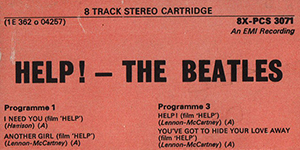 |
|||
| This cartridge
is a brown plastic case with a white paper label affixed to
the front face. The four 'programmes' with track listing is
printed in black along with the standard color artwork for
this album. A.K.A. "tombstone (orange)" label |
With a orange
paper label affixed to the front face and end. Album title,
catalog number, and the four 'programmes' with track listing
is printed in black. |
|||
| LABEL: FRONT CLOSE UP | ||||
 |
"All rights of the manufacturer ... and copying of this record prohibited." was printed. | |||
| LABEL: BACK CLOSE UP | ||||
 |
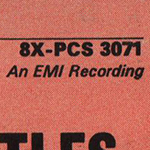 |
"3 3/4 ips" (3.75 inches per second) tape
speed. Catalog number "8X-PCS 3071" and the EMI country code (*1) were printed on the label. |
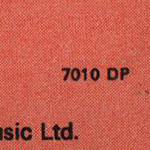 |
Printer company's name and relrease date "7010 DP (Data Packaging)" was printed at the bottom of the label. |
| LABEL: BACK CLOSE UP | ||||
 |
 |
|||
| "E.M.I Records
(The Gramophone Company Ltd)" and "Made and Printed in Great
Britain" were printed at the bottom of the label. Parlophone and EMI logomark was NOT printed. |
||||
| LABEL: BACK CLOSE UP | ||||
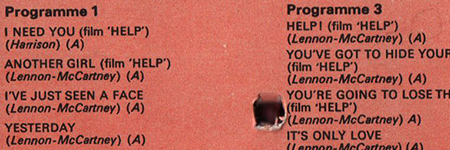 |
EMI originally issued the Beatles UK albums on 8-track tape with re-arranged running orders, the reason for this was that because of the 8-track stereo tapes, it was necessary to adjust the endless tape's four tracks to be approximately the same length. | |||
| LABEL: BOTTOM CLOSE UP | ||||
 |
Catalogue number and album
title was printed at the end of the label. |
|||
| OTHER ITEM | ||||
| - | ||||
| LABEL | Color Paper Label Type-2: A.K.A. "tombstone (orange)" label | |||
| MIX | STEREO | |||
| RECORD COMPANY'S NAME | EMI Records (The Gramophone Company Ltd) | |||
| CENTRAL REMARK "SOLD IN U.K." |
- |
|||
| RECORDING PUBLISHED CREDIT | (P) 1965 | |||
| SHELL | Brown Shell |
|||
| CARTRIDGE CASE |
Plastic
tape protector fitted to the top of the cartridge, and
released in generic cardboard EMI case (sorry, I don't have
it) |
|||
| PRINTER CREDIT | 7010 DP (Data Packaging Corporation**) |
|||
| COVER DESIGN/ PHOTO/ NOTES | Cover photo: Robert Freeman |
|||
| PRODUCER | George Martin | |||
| COMMENTS | This cartridge is a brown
plastic shell with a white color paper label
affixed to the front face. The four 'programmes' with track
listing is printed in black along with the standard color
artwork for this album. Original issue with a "tombstone label," plastic tape protector fitted to the top of the cartridge, and released in generic cardboard EMI case (maybe). There are three types of title background colors on the label surface: orange, pink, and light blue (maybe). "IE" catalogue number (*1) in addition to the ordinary "8X-PCS 3071" EMI catalogue number. The magnetic tape is played at 3 3/4 (3.75) inches per second (twice the speed of a cassette). The 8 track cartridge format was jointly developed by Ampex Magnetic Company, RCA Records and Lear Jet Company primarily as a dashboard-based music system for the booming car market. The format was launched in the USA in September 1965, with RCA Victor releasing 175 titles and the Ford Motor Company announcing the format as an option on many of its new 1966 car models. Not long after, players designed for the home began to appear, often incorporated into Reel-to-Reel players. 8 track stereo cartridges comprised four parallel pairs of two-channel stereo programmes: tracks 1 and 5 comprised the first section, 2 and 6 the second, 3 and 7 the third, and 4 and 8 the fourth section. Tracks 1 through 4 were heard through the left speaker while tracks 5 through 8 were heard through the right speaker. All four sections were approximately equal in length and played automatically in sequence. The similar section length often meant that albums had to be re-sequenced to fit the medium, or, in some instances, having songs added, edited or repeated. Conversely, it could also result in long periods of silence between sections. The original Beatles 8 track cartridge release of "Sgt. Peppers" in Oct. or Nov. 1969, through "Abbey Road (Nov. 1969)", "Let It Be (August 1970)", and the first release of most of the other Beatles 8 track albums in Sept. and Oct, 1970, just months after EMI opened their new tape duplicating facilities at Hayes in Middlesex in July, 1970. EMI UK commence manufacture of cartridges in November 1969 (maybe). The cassette and 8-track were released at the same time. (Excluding "Sgt. peppers")
(*1) EMI country code: The EMI country codes (introduced on 1 June, 1969): In most cases the EMI Codes are the first two letters of the record's catalog#. These EMI Country Codes were used to indicate the country in which the record was pressed. Note this doesn't necessarily means the record was also released in that country (from Discog). OC / 0C / 1E= UK (**)Data Packaging Corporation: (who also traded as Hellerman Data Packaging Ltd) supplied cassette and 8 track shells, tape and other components to the music industry. The "DP" logo can often be found moulded into cassette shells, especially during the early to mid 1970s. |
|||